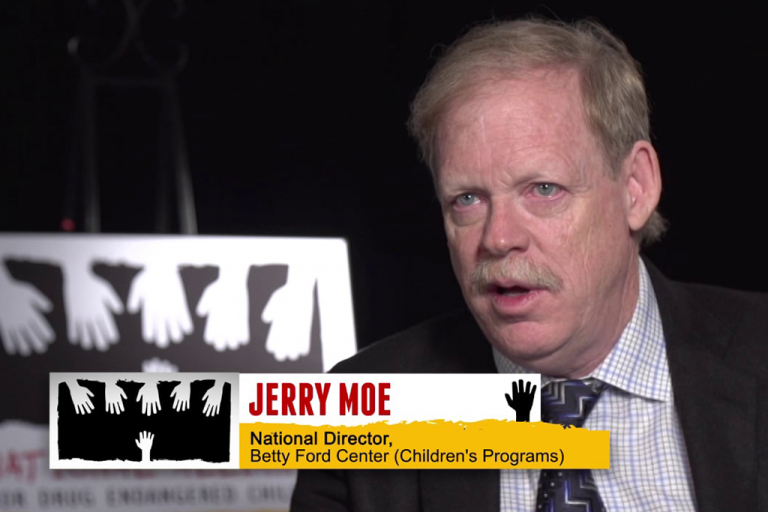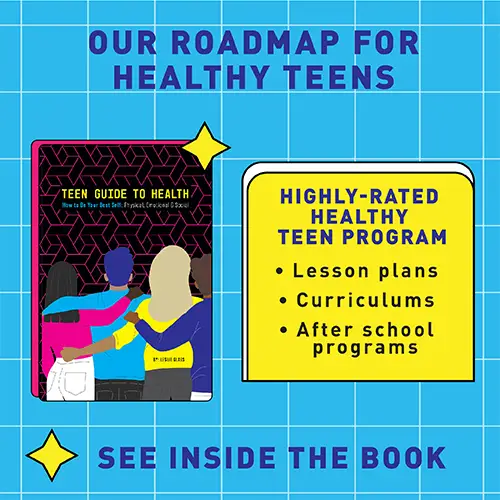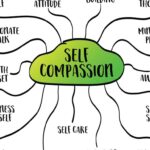A rare conversation about children affected by addiction from two pillars of the recovery movement. William L White, the premier addiction treatment historian and pioneer recovery advocate, interviews Jerry Moe, the premier advocate for the needs of children impacted by addiction
Introduction by William White
For more than thirty-five years, Jerry Moe has been one of the most singular advocates for the needs of children affected by addiction. Jerry Moe has a Master’s degree in education and counseling, but no academic program now in existence in the United States could have prepared him for this life mission. Much of the historical work in this area as a culture has focused on the effects of addiction on infants and young children (via the child welfare system, the primary school system, and child-focused therapy) or on providing support for affected teens (via student assistance programs, Alateen, or varied counseling programs). Much of Jerry’s clinical work has focused on the neglected needs of those who lie between the developmental stages of infancy and childhood on the one hand and adolescence and young adulthood on the other. I recently (January 2015) had the opportunity to interview Jerry about his work with “tweeners”—children from age seven to twelve—at such treatment facilities as the Betty Ford Center, Sierra Tucson, and the Sequoia Hospital Alcohol and Drug Recovery Center.
Bill White: Jerry, like so many of us who work in this field, your entrance begins with a very personal story. Could you briefly recount how that personal story led to your involvement and subsequent leadership within the field?
Jerry Moe: What a joy and honor it is to do this with you today. My story begins at age fourteen, when I was fortunate and blessed to find Alateen. I became a regular participant in Alateen and had a wise sponsor who was very clear that we were going to work all the Alateen steps. This was a pivotal point in my life, shaping my response to my father’s alcoholism. It helped me to look inward and begin my own healing journey. I became an Alateen speaker. I’d attend Alcoholics Anonymous conferences where there would be an AA speaker, an Al-Anon speaker, and an Alateen speaker. Filling that latter role was an opportunity to share my experience, strength, and hope and convey how teenagers can recover from this family disease. I was young and naïve enough to not realize what a big deal it was to convey this message in a room filled with hundreds of recovering people. Unfortunately, Alateen is the only Twelve-Step program with an age limit. At twenty-one, I faced a dilemma. My sponsor, who gratefully was still guiding me, suggested I go to Al-Anon. I started going to Al-Anon meetings, but it wasn’t a good fit. This was long before Adult Children of Alcoholics Al-Anon meetings, or CODA [Co-Dependents Anonymous]. After a few months, my sponsor suggested that I become an Alateen sponsor. I 2 went through an interview with group representatives and district representatives before taking on this role. The neat thing about it, Bill, was that my Alateen group coincided with a very popular Alcoholics Anonymous meeting, and a well-attended Al-Anon group. It was an evening of Twelve Step meetings for the entire family. Over the next few years, this Alateen group grew to between forty and sixty regular participants.
Bill White: Were many younger children involved at that time?
Jerry Moe: Ten and twelve-year-olds and sometimes even younger children began to show up for this meeting. We’d do a group conscience and the teens would always say, “Oh yeah, let a younger child come in. They need help, too.” But after two years, what became clear was how difficult it was to meet the developmental needs of such a wide age span. I’d often wondered as a young adult how my life might have been different if I’d been helped when I was seven or eight years old instead of fourteen. That decision to focus on the younger kids was the beginning of my professional journey. I never could have anticipated what would unfold in the years ahead. Early Career
Bill White: When and where does that professional journey begin?
Jerry Moe: That journey began at the Delancey Street Foundation during my undergraduate work. I had this wonderful advisor who helped start the Haight-Ashbury Clinic and who believed that the best learning takes place outside the classroom. So I did an internship at the Delancey Street Foundation. What I did within this therapeutic community was help residents prepare to take the GED exam. Most of those I worked with were recovering alcoholics and addicts who had spent a lot of time in the criminal justice system and were now putting their lives back together. I found that I really enjoyed working with this population, and the experience also reinforced my thinking about the value of prevention. I was struck by the possibilities if these folks had been reached when they were younger—how the trajectory of their lives could have potentially been so different. After graduation, I was working in special education in the Redwood City School District. Based on my professional education and experience in Alateen, I created a program for younger kids. Alateen comes under the auspices of Al-Anon Family Groups, and they weren’t looking to sponsor a program for kids under the age of twelve. So, I created a weekly one-hour program to serve these kids. It was an education/support group experience, specifically for kids growing up in families affected by alcoholism and other drug addiction. I piloted that program at the Salvation Army’s Clinton House in Redwood City, California. Much to my surprise, it was very well-received with a group of just little kids. Now my challenge was to find a permanent home for the program. At the time, there was Children Are People, founded by Rokelle Lerner and Barbara Naiditch in Minneapolis-St. Paul; Claudia Black was working with young kids in Washington, and Phil Diaz was doing Project Rainbow in New York. I just didn’t know about these programs or the efforts by others to support this special population.
Bill White: If I remember right, you found that home within a series of addiction treatment programs. 3
Jerry Moe: That is correct. I first took the children’s program to Sequoia Hospital Alcohol and Drug Recovery Center in February 1978. It was a twenty-eight bed, inpatient addiction treatment program. When I first met with the administrators, I told them that if we offered a children’s program that was open to all children, not just the children of patients in treatment, that I would guarantee ten inpatient admissions and five outpatient admissions a year, directly a result of that program. Today, I laugh at such boldness. The administrators looked at each other quite skeptically. My response was, “Well, if someone needs to bring the little kids to group and if those people are also participating in Twelve-Step meetings while the children’s program is taking place, there’s a chance that we’re going to begin to change the family system from the other side of the equation. Instead of waiting for the alcoholic or the addict to seek treatment, let’s help the family. Maybe change in the family system will accelerate help-seeking on the part of the addicted family member.”
Bill White: That’s a remarkable argument for that time period.
Jerry Moe: It was the application of Dr. Murray Bowen’s family systems theory from graduate school. Change one part of the family, and the whole family’s going to change as a result. The administrators at Sequoia bought my argument, and we began to see adults entering treatment as a result of the support we were providing other family members. I wanted to work in the treatment field full-time with little kids, and it took a number of years to make that happen because that job didn’t exist. Before I forged such a position, I worked as a detox counselor, a counselor on the midnight shift, a family counselor, and a continuing care counselor—all of that gave me the basics of working in this field before I began my full time work with children. My work continued at Sequoia, then at Kids Are Special, then back to Sequoia, Sierra Tucson, and then to the Betty Ford Center, where I have been since 1998. All of these later positions focused on work with children. Through this work, a new model emerged. The traditional model was weekly group for sixty to ninety minutes. There would be boys and girls just about to make a breakthrough—to talk about hurting inside, the guilt and shame they felt, or their fear that they were going to lose their parent, and then time would run out. We’d meet again the next week, and it wasn’t like the Dallas TV show where you’re left with a cliffhanger and the first thing you see is its resolution. In real life with these kids, you had to start all over the next week. By the end of 1979, we began to hold weekend retreats with the alumni organization at Sequoia Hospital, and I’d run a children’s program parallel to the adult program. Over the course of a weekend, there was time for recreation, social interaction, and play. We’d deepen the process because there was more time to build relationships and create safety with the children. In 1985, we started summer camp for children of alcoholics. It was specifically for kids who were participating in the Sequoia program because we already knew them and realized that they could benefit from a six-day, five-night camp experience. And it was a camp, in every traditional sense—with marshmallows, campfires, hideand-seek, and swimming, but also with a focus on dealing with alcoholism and other drug addiction in their lives. I’m proud to say that in early July 2014, I went to the thirtieth annual gathering of this camp. It’s still helping a lot of kids in Northern California, and I’m blessed to be invited back to participate every year.
Bill White: How did this camp model evolve into your later work? 4
Jerry Moe: What fortuitously happened was that we used the camp model at the National Association for Children of Alcoholics (NACoA) conferences. In the mid-1980s through the 1990s, NACoA held a national conference. Someone had the idea to do a children’s program during the Conference while their parents went to lectures and workshops. I was approached to direct this children’s program. Sierra Tucson often sponsored this children’s program. That’s how I met Bill O’Donnell, who was the CEO of Sierra Tucson at the time. At one point he said, “Jerry, would you consider coming to work at Sierra Tucson and creating a five-day children’s program that would run parallel to the family program?” That was how I came to work at Sierra Tucson from 1991 to 1998. The model came directly from the camps. Betty Ford Center Children’s Program
Bill White: And how did the opportunity then arise to move to the Betty Ford Center?
Jerry Moe: The Betty Ford Center, from its inception in 1982, was doing work with children, but it was done on a piecemeal basis. Quarterly, one of the family counselors would do a couple of days with kids and also do something with parents. But it wasn’t until 1996 that the Betty Ford Center received a generous philanthropic gift and hired someone to develop a fulltime children’s program. I was called upon to serve as a consultant to review the program and offer suggestions based on the model that I’d been working on for so long. Then, in 1998, I was invited to go to the Betty Ford Center and create the children’s program that we continue to run today.
Bill White: For those that are not familiar with that program, how would you describe the structure of that program?
Jerry Moe: There are a number of program elements. The community program is a four-day, all-day program open to all boys and girls who come from a family where alcoholism and/or other drug addiction has been a problem. It was Mrs. Ford herself who insisted no child ever be turned away due to an inability to pay. The first two days, Bill, are just for the children, and we use an experiential play model to teach kids about the true nature of alcoholism and other drug addiction. We teach them a variety of communication skills and coping strategies—ways to take good care of themselves. Then during the last two days, a parent, grandparent, or a foster parent—or maybe it’s the twenty-one-year-old who’s just been through a young adult program at a treatment center—will come and participate with the child. We also do a school-based program. We partner with a local school district, and the school principal and the counselor pick children to participate. The principal sends home a letter inviting kids because we need parental consent. We do a four-day program at the school where boys and girls are pulled out of all classes to attend the program. Many more of the boys and girls in the school program live with active addictions, so we change the model to talk more about safety plans and safe people—ways to just stay safe. Then the school counselors do follow-up. A third element is for kids who live locally. Every Wednesday night is Continuing Care Night. It’s a one-hour group much like the model that originally was created at Sequoia Hospital. It’s an hour of age-specific group support for the children who’ve been through the Children’s 5 Program. If you’re an alumnus of the Betty Ford Center Children’s Program and you’re a teenager, you go to Alateen and then there’s an AA and Al-Anon meeting for the grown-ups. So, it’s an evening where the whole family can come to deepen their healing.
Bill White: How would you describe the goals or core principles that underlie the Betty Ford Children’s Program?
Jerry Moe: Our focus is on helping boys and girls understand the true nature of alcoholism and other drug addiction, for them to realize that it’s not their fault, they’re not to blame, they didn’t cause it, and they can’t cure it. We also teach them about their own risk for developing addiction. We emphasize creating a place where kids feel safe and they can—through art, stories, writing, and role-plays—begin to share their own experience of what’s happened in their lives. And it’s also about play—an opportunity for boys and girls to be children. While we’re engaged in a lot of therapeutic activities throughout the day, there’s also swimming, hide-and-seek, playing ball, having meals, and social interaction. Play is an incredibly important part of the program.
Bill White: I seem to recall you’ve adapted and delivered the program in some very different cultural contexts.
Jerry Moe: Yes, I’ve been blessed to work with Native Americans. Through Don Coyhis and White Bison, I have learned a great deal about Native culture and how to incorporate stories and rituals into our work with Native children. Our staff has done a children’s program in Alkali Lake in Canada with a tribe that is a model of recovery and healing. I’ve been a frequent presenter and worked with children at the Seminole Wellness Conference in Florida. The Betty Ford Center is located in Coachella Valley, so we also serve MexicanAmerican families by offering bilingual groups. It’s typical that the boys and girls from these families speak both English and Spanish, but often the parents are Spanish-speaking only. Children often go back to their Native language when things get emotional. I have been both an attendee and presenter at the annual Counseling and Treating People of Color Conference. Dr. Frances Brisbane has helped me to become much more culturally competent in this work.
National and International Work
Bill White: Is the BFC children’s program offered in other locations?
Jerry Moe: There are three Betty Ford Center Children’s Programs. In addition to our program here in Rancho Mirage, California, we operate a program in Irving, Texas, that encompasses the Dallas – Fort Worth Metroplex. We also have a Children’s Program in Aurora, Colorado, that serves the greater Denver area. Mrs. Ford was instrumental in the Children’s Program expansion. She knew that few communities offered such programs and that it would benefit so many boys and girls. Now with the merger of Betty Ford Center and Hazelden, the thought of expansion is very exciting.
Bill White: Have you been called upon to do training and consultation to help replicate or adapt the Betty Ford Children’s Program at other sites? 6
Jerry Moe: Yes, we have partnered with Brighton Center for Recovery in Michigan, and the Houston Council on Alcohol and Drugs to offer the Betty Ford Center Children’s Program Training Academy. We train key staff for two years to develop and then independently operate a children’s program for their local communities.
Bill White: I know you’ve taken this work internationally in such countries as Russia, China, and Africa. Have you been struck by how similar the experiences of affected children are across these cultures?
Jerry Moe: In Russia, China, and Ghana, I was blessed to work directly with little kids. In all three places, I didn’t speak their native tongue, so there were interpreters. While I did a crash course in their culture and tried to learn as much as I could in a short amount of time, I was struck wherever I went that little kids are little kids. They’re hurt by this disease. They respond so quickly and so favorably to the tools and techniques we’ve developed over the years. What I’ve always wondered is: Will these same games and activities work in other cultures? How do we need to change it up a little bit? How do we best meet their needs? In working across cultures with children challenged by addiction, the similarities so outweigh the differences. To touch little kids’ hearts is the key to all of it. While what we do is incredibly important with children, it’s how we do it, with love, with kindness, listening, and caring that’s the most important part of all.
Evolving Status of Children’s Programs in the U.S.
Bill White: Jerry, let me take you to a larger discussion about where you see the field. First, could you elaborate on the status of family and children’s programs when you entered the field?
Jerry Moe: At the time I entered, this work had already begun, but it wasn’t until the founding of the National Association for Children of Alcoholics in 1983 that there was a vehicle to network and expand such efforts. Before then, those of us trying to do this work knew little of each other. There were pioneers whose work influenced NACOA and its mission, such as Stephanie Brown’s ground-breaking work with adult children and Claudia Black’s early work, including her first book, My Dad Loves Me, My Dad Has a Disease. Sharon Wegscheider-Cruse was doing amazing work with families. I remember ordering Robert Ackerman’s book, Children of Alcoholics: a Guidebook for Educators, Therapists, and Parents, and it arrived in brownwrapped paper, as if people would have been ashamed to have others know they had ordered it. We had those early resources, but we had yet to become a mobilized force within the field and the larger culture. Bill White: So, in many ways, NACOA became the kinetic detonation point for the movement dealing with the needs of families and children. Jerry Moe: Most definitely. I am not a NACOA founder. I’m part of the second wave that came after the founders. I was doing work with children when NACOA was founded but my involvement came later. NACOA was the umbrella embracing some extremely gifted and talented counselors, writers, and advocates. In addition to Claudia Black, Stephanie Brown, and 7 Bob Ackerman, there were Cathleen Brooks, Sharon Weigsheider-Cruse, Sis Wenger, and Tim Cermak. What incredibly rich resources! NACOA helped to validate and strengthen what I was doing, and provided a key support mechanism. This talented and gifted group of folks both challenged and stretched me to further grow and develop.
Bill White: So much of this seminal work was done in the 1980s and early 1990s. Have we progressed beyond that pioneering work, or have we as a field lost some of the focus on children?
Jerry Moe: We’ve progressed in many ways, Bill. I think about the work that gets done in the schools with student assistance programs and with prevention. Mrs. Ford always said that we need to go to where the kids are, and where are the boys and girls? They’re in schools. Children’s programming needs to reach beyond the walls of addiction treatment. It needs to be open to all kids. There’s also exciting work being done in the faith community and with Drug Courts. The National Association for Children of Alcoholics now works closely with SAMHSA and with the White House Office on National Drug Control Policy. You see how far we’ve come. But while we’ve made progress, there are still so many boys and girls out there who are hurting and who don’t have access to the education and support that they so desperately need. We need more clinicians and programs to address this issue.
Treatment Program Response to Needs of Children
Bill White: What do you think are some of the most important steps that inpatient and outpatient addiction treatment programs can take to better address the needs of affected children?
Jerry Moe: One of the first things that treatment centers can do is offer family and children’s program services to the general public—to affected families and children whose addicted family member is not in primary treatment or in stable recovery. It’s time we widened the doorway for all affected families. Such families can also include the men and women in long-term recovery who want to involve their children in support services to help break intergenerational cycles of addiction. The second thing treatment centers can do is address parenting issues in recovery. This is a tough one because there are so many critical things to address in treatment, but there needs to be a focus on parenting issues in early recovery. Right here at the Betty Ford Center, there may be a mom who has been in treatment for a few weeks who today has a spiritual awakening and realizes the devastation this disease has wreaked on herself and others, particularly her children. And she may also come to realize the similar devastation it did to her when she was growing up. She now sees the horror of this repeated cycle that she was so adamant to avoid. We can help empower folks in early recovery to begin to balance their own recovery with the needs of becoming a more effective parent, one day at a time.
Resources
Bill White: I know you and others have created a number of resources that would be of great help to programs wanting to amplify their focus on children. What’s the best way for people to access those resources?
Jerry Moe: Over a dozen years ago, the National Association for Children of Alcoholics (NACoA) partnered with SAMHSA to create the Children’s Program Kit. All of the NACoA people who worked on the Kit donated their services to create this. It remains an excellent resource for working with elementary, middle-school, and high-school youth. About one hundred-eighty thousand Kits have been distributed across the United States. The good news today, Bill, is that NACoA is in the process of finishing a major revision of this Kit. People can go to the NACoA website, www.nacoa.org, and order that kit for free. There’s also a Native American-specific kit that Don Coyhis and White Bison helped put together. The kit has been used in a variety of settings, from treatment programs, schools, family clinics, mental health programs, private practice settings, church youth groups, and Boys and Girls Clubs. We are always trying to create new resources for our alumni kids, ones that reinforce the major messages and strengthen the skills they learned in the program. One exciting development is the Beamer Project. Tom Drennon and I created a series of books revolving around a ten-yearold named Beamer. His head is shaped like a light bulb, and it actually changes colors as his feelings change. Both of Beamer’s parents have been trapped by addiction. Children readily identify with the many challenges he faces and the solutions he utilizes to positively cope on a daily basis. This has become wildly popular with the kids and is being developed into animation with hope of wider availability.
Child Vulnerability and Resiliency
Bill White: I’d like you to reflect on some of what you’ve learned about children through your years of running children’s programs. How do you now view the vulnerability of children and the resiliency of children?
Jerry Moe: I still get to do groups with boys and girls, not as often, but I am still moved and refreshed by this contact. Many are so hurting, yet have mastered the ability to look good on the outside. When boys and girls have adversity or challenges in their life, many have the blessing to go home to a safe place for support in facing these challenges. But for boys and girls who grow up in families with alcoholism and drug addiction, the dilemma is that home is often the source of those challenges. So, these kids are incredibly vulnerable, but you said it: so many are resilient. I never forget the longitudinal study of Dr. Emmy Werner, who is often referred to as the “grandmother of resilience.” She studied the children of Kauai for almost 50 years. Many of them were children from alcoholic and drug-addicted homes. What I most recall from this study is that the presence of a nurturing, caring adult in a child’s life can make such a difference. I look at the way that we structure the children’s program, and it’s really a strength-based model. One of the most important lessons I’ve learned through the years is children don’t care about how much you know until they know about how much you care. So, bringing your heart and soul, developing that relationship, playing with kids, listening to boys and girls is so important, and it’s important because of its ability to move children from a position of vulnerability to a place of resilience. 9 It’s being in a group with other kids who are going through the same exact thing, knowing they’re not alone and that there are other kids like them. At the Betty Ford Center, it’s about sending kids a newsletter every ninety days in the mail, and a series of Beamer books to reinforce those major messages. We make a promise to kids going through our program that we’re going to always be here for them. They get an 800 number that they can call, and e-mail addresses where they can reach us when they are hurting or scared, or even when they’re joyous because something good is happening in their lives.
Breaking Intergenerational Cycles
Bill White: You referenced earlier this propensity for addiction to move from generation to generation within families. Given your experience, what strategies could be used to help break such cycles of addiction?
Jerry Moe: The best gift parents, grandparents, or an older sibling can give to a child is the gift they give themselves, and that starts with getting clean and sober. I’ve worked with so many boys and girls who would give anything to see a parent not just get well, but to then consistently be in their lives. The plea from the child is to play with me, love me, teach me, keep me safe, respect me, honor me, listen to me. When those things are present, cycles of addiction can be broken. When I have the opportunity to talk to people in early recovery, I always tell them that the greatest devastation of the disease of addiction is that you cannot consistently love the people who mean the most to you because the disease keeps getting in the way. I suggest three remedies. Number one is to work on your own healing. That is the foundation. Secondly, begin to rebuild relationships with your children (or your younger siblings.) And it’s hard in early recovery because so much else is going on. But I suggest that even if it’s just once a week for thirty minutes, set time aside, put everything else out of your world and just show up and play with those little ones in your life. That’s what boys and girls want the most; they want time and positive attention, and addiction robs everyone in the family of both. Then, thirdly, I always suggest to folks in recovery to find a program or resource that can offer support for your child. I truly believe that one of the ways to begin the process of making amends to the people we love is to see that children have such support, whether it is a formal program or a counselor or a youth minister—someone who will just sit and help explain what’s going on in a way that the child can understand. This is a safe person to whom children can talk. Without help understanding this in an age-appropriate way, boys and girls often make up a story to make sense of it all. Unfortunately, those stories are often far off-base. “Did I do something wrong? Is it my fault?” Such a miscast story may continue to shape their lives and thwart them from realizing their true potential.
Bill White: Listening to you makes me wonder if we’re at a point where we need a parenting effectiveness in recovery training program built in to all treatment programs, if not during primary treatment, then as part of continuing care.
Jerry Moe: Bill, I agree with you wholeheartedly. The Betty Ford Center held a conference in 2010 in Washington, DC, where we explored parenting and its role in the treatment and recovery process, especially in terms of breaking the intergenerational cycle of addiction. This is an area 10 that needs much more emphasis and programming, particularly for those in early recovery. Addressing effective parenting in recovery and healing the parent-child relationship are critical issues that we can’t afford to neglect.
Media Coverage of Affected Children
Bill White: I’ve watched the media coverage of children affected by addiction, if it’s covered at all, and what’s there seems to primarily focus on the damage done to children. I don’t see the flipside of the story, which is the story of resilience and recovery of children within these families. Would you agree with that critique of the media?
Jerry Moe: This is too often the case. Through the years, I have been invited on national shows that wanted to primarily focus on the disease and how it devastates the whole family. No thanks. What’s missing is media coverage that speaks of hope, recovery, and healing. I think it’s something that has dogged our entire field, but there are wonderful exceptions. I worked with Nickelodeon News and Linda Ellerbee of Lucky Duck Productions to produce a thirty-minute Nick News Special, Under the Influence: Kids of Alcoholics, that initially aired in November 2010. We focused on solutions and hope. It featured five adolescents, all from different backgrounds, across the United States, and all living in various family contexts: some in recovery, some dealing with relapse, and some where the addiction remains active. The show looked at how children learned to positively cope with the challenges they face in their lives. This show won an Emmy Award.
Closing Reflections
Bill White: As you look back over a long and what has already been a significant career, what do you personally feel best about?
Jerry Moe: We are developing a growing body of scientific evidence that the work we are doing with children really makes a difference. I’m proud of the Children’s Program Kit that is free, has been so widely distributed and used to change the lives of countless children and families. There are many adults who I worked with as kids who still keep in touch. It’s wonderful to see that the seeds we planted in their lives have born such wonderful fruit. But it’s more than just the kids; it’s watching families heal, and, for me, it’s having alcoholics and addicts who say thank you, I’m letting go of my guilt and shame. It’s watching families get beyond their disease to live lives of recovery, hope, and joy. It’s seeing adults become good citizens and responsible parents and passing that on to the next generation. Today, we’re seeing people stand up and say, “I’m in recovery.” It’s recovering alcoholics and addicts shifting from how their disease hurt their children to how their recovery is benefitting themselves, their families, and their children. That’s a big shift.
Bill White: We will have some readers of this interview who are interested in potentially devoting their lives as you have to affected children. Do you have any closing guidance that you would offer those individuals? 11
Jerry Moe: Well, the first thing I’d say is, “Come on board, we need you.” We need people who bring energy and passion. Bring your heart and soul to this work on a daily basis. Self-care is incredibly important. This work can be exhilarating and exhausting, so finding balance between the work and self-care of oneself and one’s own family is very important. Be patient with children, letting them be kids and letting them be silly and make mistakes. It is equally important to be patient with the systems that we work with as we push them to make substantial changes in how they operate. Celebrate the wins—big and little—and experience the joy in the journey. What we do in this work is never an event; it is a process that we must both guide and let unfold. Reach out to people who have done this work before you and learn lessons from them, but then be brave and courageous enough to take this work to new levels. Parents need to be an integral part of what we do with children. It’s essential that we empower the grownups taking care of the children to work on their own healing and to develop the tools to become effective parents and grandparents and older brothers and sisters. Cultivate a good sense of humor in order to always be able to laugh and maintain a balanced perspective on what we are doing. I was interviewed not long ago by someone who was new to this issue who said, “My goodness, there must be so much pain in what you do.” I work with little kids who are in pain, who describe their pain, who act their pain out, who then courageously talk about it. But to me, I always think of the joyous gift I have found in this work—to witness nine year olds or twelve year olds doing such healing rather than painfully waiting until they’re forty years old or sixty years old or eighty years old to do that.
Bill White: Jerry, this is a wonderful place for us to stop. Thank you for taking this time to share what has been an incredible personal and professional journey.
Jerry Moe: Thank you, Bill.
Acknowledgement: Support for this interview series is provided by the Great Lakes Addiction Technology Transfer Center (ATTC) through a cooperative agreement from the Substance Abuse and Mental Health Services Administration’s (SAMHSA) Center for Substance Abuse Treatment (CSAT). The opinions expressed herein are the view of the authors and do not reflect the official position of the Department of Health and Human Services (DHHS), SAMHSA, or CSAT.





















